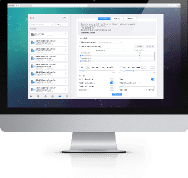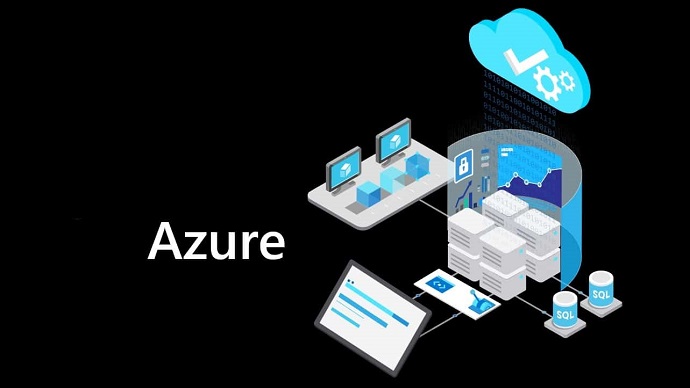Use VCE Exam Simulator to open VCE files

CSM-001 GAQM Practice Test Questions and Exam Dumps
Question 1
What is the maximum amount of time that the team should spend in the daily scrum?
A. As long as it takes
B. 1 hour
C. 45 minutes
D. 15 minutes
E. 15 minutes, proportionally less for shorter Sprints
Correct Answer: D
Explanation:
The Daily Scrum is a key event in the Scrum framework, aimed at promoting team communication and collaboration. According to Scrum guidelines, the time-box for the Daily Scrum is 15 minutes. This meeting is designed to be short and focused to ensure that the team discusses progress and addresses issues efficiently without unnecessary delays.
A. As long as it takes
This is incorrect. While it might seem practical for a team to extend the Daily Scrum if more discussion is needed, Scrum guidelines strictly recommend a time-box to keep the meeting focused and efficient. Allowing it to run indefinitely could lead to distractions and make the meeting less effective.
B. 1 hour
This is incorrect. A 1-hour Daily Scrum would contradict Scrum's core principle of keeping the meeting short and focused. The purpose is to provide quick updates, not to hold long discussions or problem-solving sessions, which are better suited for other meetings outside of the Daily Scrum.
C. 45 minutes
This is incorrect. Similar to option B, a 45-minute meeting would be too long for the Daily Scrum. The Scrum Guide clearly defines the meeting duration as 15 minutes, not 45 minutes.
D. 15 minutes
This is correct. The Daily Scrum is a time-boxed event that lasts for 15 minutes. The goal of this brief meeting is to provide a quick update on the work done, the work planned for the day, and any potential blockers. This brevity helps maintain focus and keeps the meeting efficient.
E. 15 minutes, proportionally less for shorter Sprints
This is incorrect. While the Daily Scrum is 15 minutes regardless of the Sprint length, the Scrum Guide does not suggest adjusting the meeting time based on Sprint duration. The meeting time remains constant at 15 minutes, no matter whether the Sprint is short or long.
The maximum time for the Daily Scrum is 15 minutes, and this duration does not change based on the length of the Sprint. The purpose of the Daily Scrum is to provide an efficient, focused update, and time-boxing it to 15 minutes ensures that the meeting remains productive and concise.
Question 2
Please select which statement is the most accurate:
A. Agile Development is an implementation of Scrum
B. Scrum is an implementation of Agile Development
C. Agile Development and Scrum are synonyms for the same methodology
D. Agile Development and Scrum are contrasting methodologies
Correct Answer: B
Explanation:
Scrum is a specific framework that is part of the Agile methodology. Therefore, Scrum is an implementation of Agile Development. The Agile methodology is a broader set of principles and values that guide software development and project management, while Scrum provides a specific framework for implementing those principles.
A. Agile Development is an implementation of Scrum
This is incorrect. Agile Development is a broader philosophy or mindset that includes multiple frameworks and practices, including Scrum. Scrum is just one specific framework used to implement Agile principles, not the other way around.
B. Scrum is an implementation of Agile Development
This is correct. Scrum is one of the most widely used frameworks that follows the principles outlined in the Agile Manifesto. While Agile emphasizes flexibility, collaboration, and iterative development, Scrum provides specific roles, ceremonies, and artifacts to apply those principles in a structured way.
C. Agile Development and Scrum are synonyms for the same methodology
This is incorrect. While Scrum is an Agile framework, Agile Development refers to a broader set of principles. Agile includes various frameworks and practices, such as Scrum, Kanban, Lean, and XP (Extreme Programming). Therefore, they are related but not synonyms.
D. Agile Development and Scrum are contrasting methodologies
This is incorrect. Agile Development and Scrum are not contrasting methodologies; rather, Scrum is a specific implementation of Agile principles. They are complementary, not opposing.
The most accurate statement is that Scrum is an implementation of Agile Development. Agile provides the principles and values, and Scrum is a specific methodology for putting those principles into practice.
Question 3
Which of the following is not a Product Owner responsibility?
A. Running the daily scrum meeting
B. Team communication
C. Gathering requirements for Product Backlog items
D. Inspecting work at Sprint Review
Correct Answer: A
Explanation:
The Product Owner is primarily responsible for managing the Product Backlog and ensuring that the development team works on the most valuable tasks. However, there are certain responsibilities that do not fall under the Product Owner’s role.
A. Running the daily scrum meeting
This is incorrect. The Daily Scrum is typically led by the Scrum Master, not the Product Owner. The Scrum Master facilitates the meeting to ensure the team stays on track and adheres to Scrum practices. The Product Owner may attend the Daily Scrum, but they do not lead it.
B. Team communication
This is incorrect. While the Product Owner is not responsible for managing day-to-day team communication, they do play a role in ensuring that the development team has a clear understanding of the product vision and the priorities of the Product Backlog. They also work with the team to provide clarifications and ensure that the team is building the right product.
C. Gathering requirements for Product Backlog items
This is incorrect. One of the main responsibilities of the Product Owner is to gather and manage the Product Backlog. This involves working with stakeholders, customers, and the development team to define and prioritize the requirements for the product. The Product Owner ensures that the backlog items are well defined and clearly understood by the team.
D. Inspecting work at Sprint Review
This is incorrect. The Product Owner plays an important role in the Sprint Review by inspecting the work completed during the Sprint and ensuring that it aligns with the product goals and backlog items. The Product Owner is a key participant in evaluating the product increment and providing feedback to ensure that the product meets the customer’s needs and expectations.
The Product Owner is not responsible for running the daily scrum meeting. This responsibility belongs to the Scrum Master, who ensures that the Scrum process is followed. The Product Owner’s primary duties involve managing the Product Backlog, gathering and prioritizing requirements, and providing feedback during Sprint Reviews.
Question 4
How should items in the Product Backlog be ordered?
A. Alphabetically first and then by list order in the Product Backlog
B. Grouped by business features first and then chronologically by date of original business request
C. Prioritized by business importance first. The items that result in biggest ROI, must be prioritized first
D. Chronologically by date of original business request first and then by list order in the Product Backlog
Correct Answer: C
Explanation:
The Product Backlog should be ordered based on business value and priority. The items that will provide the greatest return on investment (ROI) or bring the most value to the stakeholders should be prioritized first. This ensures that the development team works on the most critical features or tasks that provide the greatest value to the product, thereby maximizing the overall impact of the Scrum process.
A. Alphabetically first and then by list order in the Product Backlog
This is incorrect. The Product Backlog should not be ordered alphabetically. Alphabetical ordering does not reflect the priority or business value of the backlog items. The order should be based on priority, not on how the items are named.
B. Grouped by business features first and then chronologically by date of original business request
This is partially incorrect. While it’s good to group related features together, the primary criteria for ordering Product Backlog items should be priority based on business value and ROI, not just by the date of the original business request. Grouping features by business context can be useful, but it is secondary to prioritizing items based on value.
C. Prioritized by business importance first. The items that result in biggest ROI, must be prioritized first
This is correct. The Product Backlog should always be ordered according to the business value of the items, with the highest priority items—those that deliver the most return on investment (ROI) or value—being placed at the top. This ensures the team is working on the most important and impactful features first.
D. Chronologically by date of original business request first and then by list order in the Product Backlog
This is incorrect. Ordering backlog items by the date of the original business request is not effective. It may result in the team working on older tasks that are no longer the most valuable or relevant. The correct order should prioritize value, not the time when the request was made.
Items in the Product Backlog should be ordered based on business importance and value. The items that provide the most return on investment (ROI) should be prioritized first to ensure the team is focusing on the most impactful work. Ordering by business value ensures that the product delivers maximum value to stakeholders as early as possible.
Question 5
Which of the following is a role in the Scrum framework?
A. Database Admin
B. Development Team
C. QA Tester
D. Senior Developer
Correct Answer: B
Explanation:
In the Scrum framework, roles are clearly defined, and the key roles are the Product Owner, Scrum Master, and Development Team. The roles are designed to ensure that everyone involved in the Scrum process has clear responsibilities to facilitate the team’s progress and the successful delivery of the product.
A. Database Admin
This is incorrect. A Database Admin is not a specific role defined in Scrum. Although a Scrum team may include a Database Administrator, this is not a formal Scrum role. The Scrum roles are Product Owner, Scrum Master, and Development Team.
B. Development Team
This is correct. The Development Team is one of the key roles in Scrum. It is composed of professionals who work together to deliver a potentially shippable increment of the product at the end of each Sprint. The team is cross-functional, meaning it has all the necessary skills to complete the work within the Sprint. The Development Team self-organizes and works collaboratively to accomplish the Sprint goals.
C. QA Tester
This is incorrect. While the Scrum team may include a Quality Assurance (QA) tester, it is not a distinct, formal Scrum role. In Scrum, quality is everyone's responsibility, and all members of the Development Team contribute to testing and ensuring the quality of the product increment.
D. Senior Developer
This is incorrect. Senior Developer is not a role in Scrum. Scrum emphasizes a self-organizing team, where every team member, regardless of their level, works together. Scrum does not require roles like Senior Developer or Junior Developer; instead, all members of the Development Team work collectively and are cross-functional.
In Scrum, the three formal roles are the Product Owner, the Scrum Master, and the Development Team. The Development Team is a key role in the Scrum framework responsible for delivering the product increment during each Sprint.
Question 6
The Scrum Framework encompasses rules or guidelines for documentation?
A. True
B. False
Correct Answer: B
Explanation:
The Scrum Framework does not define specific rules or guidelines for documentation. Instead, it focuses on delivering value through collaboration, transparency, and incremental progress. Scrum encourages teams to work efficiently and effectively, minimizing unnecessary overhead, including excessive documentation.
A. True
This is incorrect. The Scrum framework does not impose strict rules or guidelines for documentation. Scrum emphasizes the individuals and interactions over processes and tools. While some documentation may naturally occur during the course of Scrum events (like the Product Backlog, Sprint Backlog, and Increment), there are no predefined rules on how much or what type of documentation should be created. Scrum teams are encouraged to keep documentation lightweight and focused on delivering value.
B. False
This is correct. The Scrum Guide makes it clear that Scrum does not define any specific rules for documentation. Scrum provides flexibility in how teams manage their work. Instead of emphasizing documentation, Scrum focuses on the creation of working software and collaboration between team members and stakeholders. Scrum documentation should be sufficient to communicate effectively and serve the needs of the team and stakeholders, but it is not prescribed in detail.
The Scrum framework is more focused on delivering value and promoting effective communication through collaboration and working software rather than prescribing extensive documentation. The amount and nature of documentation in Scrum are flexible and should be just enough to serve the needs of the team and stakeholders.
Question 7
The individual, detailed pieces of work that are needed to convert a product backlog item into a working software component or solution are called:
A. User Stories
B. Use cases
C. Line items
D. Tasks
Correct Answer: D
Explanation:
In the Scrum Framework, the Product Backlog is a list of work items or requirements that the team needs to address to complete the product. The Product Backlog Items (PBIs) represent high-level work requirements, but they need to be broken down into smaller, actionable pieces before they can be implemented.
A. User Stories
This is incorrect. User Stories are a common technique for expressing requirements in Scrum. However, User Stories themselves are typically not the individual, detailed pieces of work. A User Story describes a feature from the perspective of the end user and serves as a high-level requirement. Once a User Story is selected for a Sprint, it may be broken down into tasks, which are the detailed pieces of work needed to implement the story.
B. Use cases
This is incorrect. Use Cases are a modeling technique often used in traditional software development methodologies to describe how a system will be used by an actor (user or another system). Scrum does not typically use use cases as part of its process. Instead, Scrum focuses on User Stories for defining features at a high level and breaking them into tasks for execution.
C. Line items
This is incorrect. The term Line items is not typically used in Scrum to refer to individual pieces of work. In some contexts, it could refer to specific items in a list (e.g., an order form or financial statement), but it is not used within the Scrum framework for defining work needed to complete a Product Backlog Item.
D. Tasks
This is correct. In Scrum, tasks are the individual, detailed pieces of work that the team performs to implement a Product Backlog Item (PBI). During Sprint Planning, the team will break down each User Story or PBI into smaller tasks that can be worked on by team members. These tasks are actionable, specific, and typically completed within the Sprint. They help ensure that the work necessary to complete a PBI is clearly understood and manageable.
The tasks are the small, detailed pieces of work that are needed to convert a Product Backlog Item (PBI) into a working software component or solution. They are the actionable steps taken by team members to implement a User Story or feature.
Question 8
Why does Scrum prevent Product Owners from changing Product Backlog items that are being worked on during the Sprint?
A. The development team cannot meet their Sprint commitment to complete work if requirements are changing
B. A Sprint cycle is not enough time for senior management review and approve changes
C. This forces Product Owners to focus on what is really important for the team to develop.
D. The development team must be able to limit the Product Owner authority
Correct Answer: A
Explanation:
Scrum emphasizes the importance of focus and commitment during a Sprint. Once the Sprint Planning meeting is complete, the Development Team commits to completing the Product Backlog Items that were selected for the Sprint. Allowing changes to these items during the Sprint could cause disruption, resulting in delays, confusion, and ultimately an incomplete Sprint goal.
A. The development team cannot meet their Sprint commitment to complete work if requirements are changing
This is correct. Scrum is designed to ensure that the Development Team can focus on the work they committed to during the Sprint. If the Product Backlog items are altered after Sprint Planning, it can create uncertainty and potentially prevent the team from meeting their Sprint goal. Constant changes to the scope can disrupt the flow of work, causing delays and increasing the risk of incomplete or inconsistent output. By preventing the Product Owner from making changes during the Sprint, Scrum ensures that the team can focus on the agreed-upon work and meet their commitment.
B. A Sprint cycle is not enough time for senior management review and approve changes
This is incorrect. While it’s true that changes to a Sprint might need to be discussed and approved, this is not the reason Scrum prevents changes during the Sprint. Scrum has defined roles, events, and timeboxes to ensure that all necessary feedback and improvements are captured before the Sprint begins, during the Sprint Review, and in subsequent Product Backlog Refinement sessions.
C. This forces Product Owners to focus on what is really important for the team to develop
This is incorrect. While the Product Owner does need to prioritize the most valuable work for the team, the primary reason changes are not allowed during the Sprint is to prevent disruption and ensure the Development Team can complete the work they’ve committed to. The focus on prioritization occurs before the Sprint starts and is handled during Backlog Refinement and Sprint Planning.
D. The development team must be able to limit the Product Owner authority
This is incorrect. The Scrum framework is based on collaboration, not limiting authority. The Product Owner has the authority to prioritize the Product Backlog, and they can make changes to the backlog before the Sprint starts. However, the team commits to a set of work during the Sprint, and the goal is to prevent disruptions to that commitment, not limit authority.
Scrum prevents Product Owners from changing Product Backlog items that are being worked on during the Sprint because doing so could disrupt the Development Team’s ability to meet their Sprint commitment. The team has agreed upon a set of tasks and should be allowed to complete them without interruptions, ensuring focus and efficiency.
Question 9
Which of the following is not a Scrum artifact?
A. User Stories
B. Sprint Backlog
C. Product Backlog
D. Software Increment
Correct Answer: A
Explanation:
In Scrum, an artifact is a key item or document that provides transparency and visibility to the Scrum process. The Scrum artifacts are meant to provide valuable information about the product and its progress. The three main Scrum artifacts are the Product Backlog, Sprint Backlog, and Software Increment. Here's why User Stories is not considered an artifact:
A. User Stories
User Stories are not a Scrum artifact. They are a tool used to break down work into manageable pieces within the Product Backlog. A User Story is a technique for describing features or functionalities from the user's perspective, but it is not an artifact by itself. It is a way of capturing requirements that are part of the Product Backlog, which is a Scrum artifact. User Stories help the team understand the work in a more human-readable way but do not serve as an artifact on their own.
B. Sprint Backlog
The Sprint Backlog is one of the three main Scrum artifacts. It is the list of Product Backlog Items (PBIs) selected for the current Sprint, along with a plan for delivering them. The Sprint Backlog evolves throughout the Sprint as the team gains more insights into the work and the Product Owner may collaborate with the team to refine the backlog as necessary. It is an essential artifact that helps the Scrum Team focus on their current work.
C. Product Backlog
The Product Backlog is another key artifact in Scrum. It is a prioritized list of all the work or features that need to be completed for the product. The Product Owner manages and prioritizes the Product Backlog, and it is continuously refined and updated throughout the project. This artifact is central to the Scrum process and is always evolving as new insights and requirements emerge.
D. Software Increment
The Software Increment is also one of the core Scrum artifacts. It represents the working product that is delivered at the end of each Sprint. It includes all the completed features and functionalities from the Sprint, as well as any completed work from previous Sprints. The Software Increment must be in a usable state, and ideally, it should be potentially releasable at the end of each Sprint. This artifact shows the value produced during the Sprint.
User Stories are a method of capturing work within the Product Backlog, but they are not an official Scrum artifact.
Sprint Backlog, Product Backlog, and Software Increment are the three core artifacts in Scrum, providing transparency and supporting the iterative nature of Scrum.
Question 10
You are the new Scrum Master at a company currently doing RUP in three-month iterations. Your current task in switching from RUP to Scrum is to define how long the Sprint cycle should be. In what units of time should you define the sprint cycle?
A. A fixed amount of months
B. A fixed amount of weeks, excluding holidays
C. A fixed amount of days
D. A fixed amount of hours
Correct Answer: B
Explanation:
In Scrum, Sprints are defined as time-boxed iterations in which a potentially shippable product increment is created. The length of a Sprint is a key factor in ensuring that the Scrum framework operates efficiently. Typically, Sprints should be between 1 and 4 weeks, and the goal is to have a consistent Sprint length throughout the development process to ensure predictability and rhythm for the team.
Let’s break down the options:
A. A fixed amount of months
Defining the Sprint cycle in months (such as 3-month iterations, which is typical in RUP) is too long for Scrum. The Scrum Guide recommends that Sprints be one month or shorter, not several months long. A 3-month cycle would not allow for the frequent inspection and adaptation that Scrum encourages.
B. A fixed amount of weeks, excluding holidays
This is the correct answer. Scrum recommends a consistent Sprint length, and 1 to 4 weeks is the optimal range. Most teams select 2-week or 1-month Sprints as this timeframe allows for quick feedback, review, and adjustment without becoming too long and slow. When setting the Sprint cycle, you typically define it in weeks, and if there are holidays, you can adjust the planning accordingly, but holidays themselves are not part of the Sprint length.
C. A fixed amount of days
While it's true that a Sprint could be defined in terms of days (such as 10 days), Scrum generally refers to Sprint length in terms of weeks. Using days directly as a measure could lead to confusion about the overall timing and rhythm of the Scrum process. In practice, most Scrum teams prefer the week-based system for its ease of scheduling and predictability.
D. A fixed amount of hours
Defining a Sprint in terms of hours is not appropriate in Scrum. A Sprint is defined as a time-boxed iteration, and using hours would not provide a clear or standardized structure for the team. Scrum is focused on days or weeks for Sprint planning, not hours.
The best practice in Scrum is to define the Sprint cycle in weeks, typically between 1 and 4 weeks, ensuring that the team can plan effectively and have regular feedback loops. Choosing a time frame in weeks allows for consistency, predictability, and proper alignment with the Scrum framework's iterative nature.
Related Exams

Top Training Courses











SPECIAL OFFER: GET 10% OFF
This is ONE TIME OFFER

A confirmation link will be sent to this email address to verify your login. *We value your privacy. We will not rent or sell your email address.
Download Free Demo of VCE Exam Simulator
Experience Avanset VCE Exam Simulator for yourself.
Simply submit your e-mail address below to get started with our interactive software demo of your free trial.